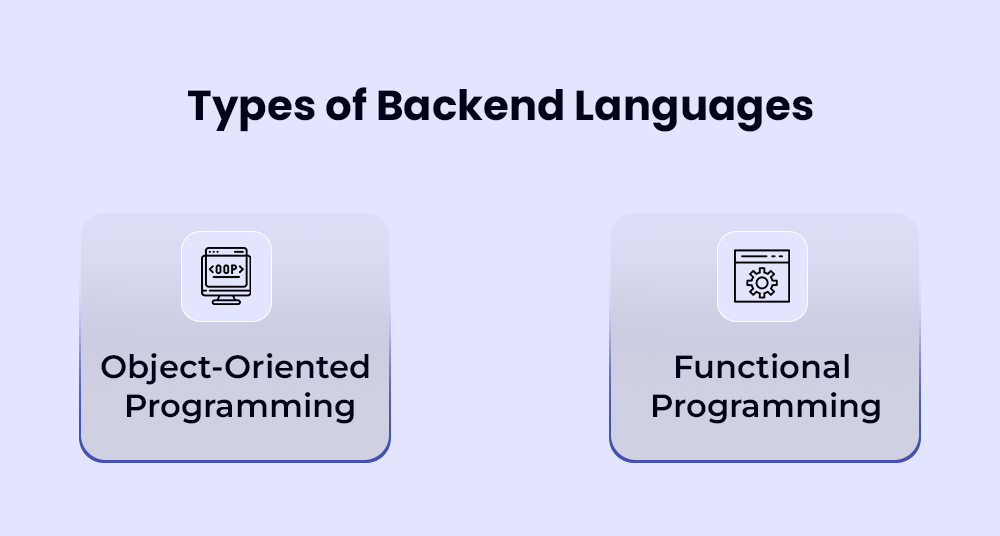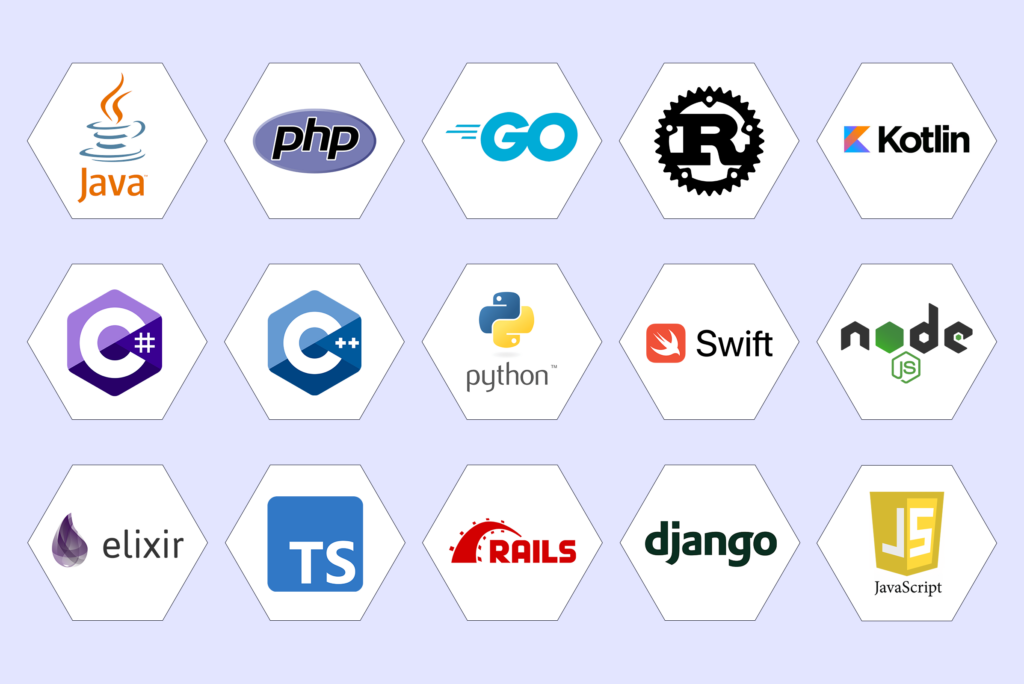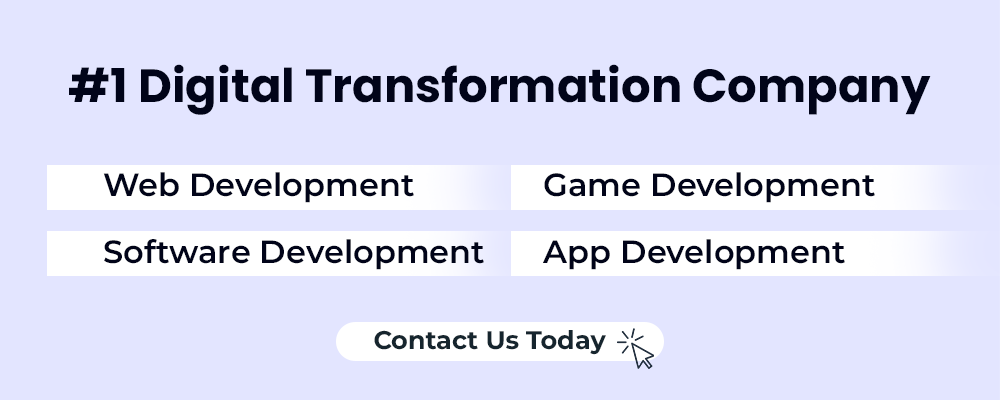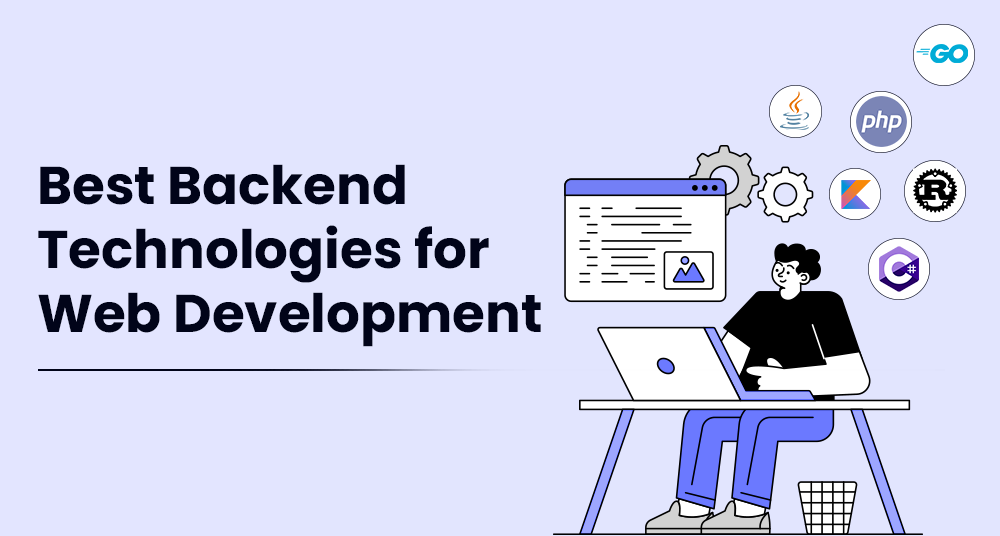In today’s digital age, almost every task we perform—whether on our computers or smartphones—relies on the seamless functioning of various applications and websites. From social media platforms to eCommerce apps, and even taxi booking services, we interact with these services daily. But have you ever wondered what makes these applications run smoothly behind the scenes? The magic happens in the backend of these platforms.
The backend is the powerhouse of any application or website, responsible for handling data processing, storage, and the functionality that enables a great user experience. Web development is a combination of both frontend and backend technologies. While the frontend focuses on what users see and interact with, the backend ensures that all the operations are executed efficiently. In 2025, as technology continues to evolve, selecting the best backend technologies becomes crucial for building scalable, secure, and high-performance applications.
What is Backend Development?
Backend development refers to the server-side work of software or websites, focusing on databases, server logic, and application programming interfaces (APIs). It ensures seamless functionality, data processing, and integration with the frontend. Backend developers use programming languages like Python, Java, or PHP to build robust systems supporting user interactions and overall performance.
What Are Backend Programming Languages?
Backend programming languages are used to build the server-side of applications, handling data processing, database management, and communication between the server and client. Popular backend languages include Python, known for its simplicity and frameworks like Django and Flask; JavaScript with Node.js for scalable, real-time applications; Java, widely used for enterprise solutions; PHP, a favorite for web development; Ruby, known for its elegant syntax and Ruby on Rails framework; and C#, often used for Windows applications. These languages enable developers to create robust, secure, and efficient backend systems that support the functionality of web and mobile applications.
Types of Backend Languages

Object-Oriented Programming (OOP)
Object-Oriented Programming (OOP) organizes code around objects, which are instances of classes containing both data and methods. This approach is ideal for large, complex projects, especially when multiple developers are involved. OOP allows for modularity, code reuse, and easy maintenance, making it perfect for applications requiring structured, scalable solutions. Common OOP backend programming languages include PHP, Java, Ruby, and Python. It is particularly effective when working in teams, as it enables breaking down problems into manageable components, facilitating collaboration and ensuring long-term project success.
Functional Programming (FP)
Functional Programming (FP) focuses on pure functions and declarations, rather than the procedural steps of programming. FP emphasizes immutability, where data cannot be altered after creation, and statelessness, ensuring functions produce the same output for the same input without side effects. FP is best suited for improving productivity, modularity, and solving complex scripting issues in a straightforward manner. It excels in handling parallel processes and high-concurrency environments. Popular FP backend languages include SQL, R, Haskell, and F#. FP’s emphasis on declarative code and immutability makes it ideal for systems requiring reliability and scalability.
Popular Backend Programming Languages 2025: Full-List

- Java
- PHP
- Go
- Rust
- Kotlin
- C#
- C++
- Python
- Swift
- NodeJS
- Elixir
- TypeScript
- Ruby on Rails
- Django
- JavaScript
Java
Java remains one of the most widely used backend programming languages due to its platform independence, scalability, and robustness. Known for its “write once, run anywhere” philosophy, Java is highly favored in enterprise-level applications, banking systems, and Android development. Java’s vast ecosystem of libraries, frameworks (like Spring), and tools makes it a go-to choice for large-scale applications. With its strong community support and consistent updates, Java continues to be a reliable backend language in 2025.
Key Features:
- Platform independence via the Java Virtual Machine (JVM)
- Strong community support
- Rich ecosystem with frameworks like Spring and Hibernate
- High performance for enterprise applications
PHP
PHP is still a dominant language for backend development, particularly for web development. It powers a large portion of the internet, including popular content management systems like WordPress, Joomla, and Drupal. PHP has evolved over the years, with modern frameworks such as Laravel and Symfony providing developers with powerful tools for building scalable and secure applications. Despite the rise of other languages, PHP’s simplicity, ease of use, and wide adoption ensure its continued relevance in 2025.
Key Features:
- Simple and easy to learn
- Wide adoption in web development
- Strong integration with databases
- Powerful frameworks like Laravel and Symfony
Go (Golang)
Go, developed by Google, has become increasingly popular for backend development due to its simplicity, speed, and scalability. Go is particularly well-suited for building high-performance applications and microservices, making it ideal for cloud-native environments. With its strong concurrency support, Go excels in handling multiple tasks simultaneously without performance degradation, which is essential for modern web services and distributed systems.
Key Features:
- High performance and speed
- Built-in concurrency support (goroutines)
- Ideal for microservices and cloud-native applications
- Simple syntax and ease of use
Rust
Rust is a systems programming language that has gained significant traction in backend development due to its emphasis on memory safety and performance. Rust is particularly well-suited for applications that require low-level control over hardware, such as game engines and real-time systems. With its strong type system and ownership model, Rust helps prevent memory-related bugs, making it a favorite for developers who prioritize safety and performance.
Key Features:
- Memory safety without garbage collection
- High performance and low-level control
- Strong type system and concurrency support
- Ideal for performance-critical applications
Kotlin
Kotlin has rapidly become a favorite for backend development, especially for Android development, as it is fully interoperable with Java. Kotlin’s concise syntax and modern features make it a more productive alternative to Java, while still maintaining compatibility with existing Java codebases. With frameworks like Ktor and Spring Boot, Kotlin is increasingly being used for building web applications, microservices, and backend services.
Key Features:
- Concise and expressive syntax
- Fully interoperable with Java
- Modern features like null safety and coroutines
- Excellent support for Android and web development
C#
C# is a versatile language primarily used with the .NET framework for building robust backend applications. It is particularly popular in enterprise environments and for developing Windows-based applications. With the rise of .NET Core, C# has become cross-platform, allowing developers to build applications that run on Windows, macOS, and Linux. C# is also commonly used in game development with Unity, making it a versatile option for both backend and gaming applications.
Key Features:
- Strong integration with the .NET ecosystem
- Cross-platform development with .NET Core
- Excellent support for enterprise applications
- Popular in game development with Unity
C++
C++ is a powerful, high-performance language often used for systems programming and performance-critical applications. While it is not as commonly used for general web development, C++ is essential for backend applications requiring high speed and low-level control, such as game engines, financial systems, and real-time applications. Its ability to manage memory manually and execute code quickly makes it a top choice for resource-intensive backend systems.
Key Features:
- High performance and low-level control
- Memory management flexibility
- Ideal for performance-critical applications
- Widely used in game development and embedded systems
Python
Python’s popularity continues to rise due to its simplicity, readability, and versatility. While it is widely known for data science and machine learning, Python is also a powerful language for backend development. Frameworks like Django and Flask make it easy to build web applications quickly, while its extensive library ecosystem allows developers to integrate with various services and technologies. Python’s ease of use and readability make it a favorite among startups and large companies alike.
Key Features:
- Simple and easy-to-read syntax
- Powerful frameworks like Django and Flask
- Excellent support for data science and machine learning
- Strong community support
Swift
Swift, developed by Apple, is primarily used for iOS and macOS development. However, with the introduction of server-side Swift frameworks like Vapor, Swift has become a viable option for backend development. Swift’s performance and safety features make it a great choice for building high-performance backend systems, especially when combined with Apple’s ecosystem.
Key Features:
- High performance and safety features
- Strong integration with the Apple ecosystem
- Modern syntax and features
- Growing support for server-side development
Node.js
Node.js is a runtime environment for executing JavaScript on the server-side, enabling developers to use JavaScript for both frontend and backend development. It is particularly popular for building fast, scalable web applications, real-time applications, and APIs. Node.js is built on Chrome’s V8 JavaScript engine, offering high performance and a non-blocking, event-driven architecture that handles concurrent requests efficiently.
Key Features:
- Fast and scalable with non-blocking I/O
- Built on Chrome’s V8 engine
- Ideal for real-time applications and APIs
- Strong ecosystem with npm (Node Package Manager)
Elixir
Elixir is a functional, concurrent programming language built on the Erlang VM (BEAM). It is particularly well-suited for building highly concurrent, fault-tolerant, and distributed systems. Elixir’s lightweight processes and built-in support for concurrency make it an excellent choice for backend systems that require high availability and scalability, such as messaging platforms, real-time applications, and microservices.
Key Features:
- Concurrency and fault tolerance
- Ideal for distributed systems
- Built on the Erlang VM (BEAM)
- Excellent for real-time applications
TypeScript
TypeScript is a superset of JavaScript that adds static typing, making it easier to catch errors during development. While TypeScript is primarily used for frontend development, it is also gaining popularity for backend development with Node.js. TypeScript’s type system helps developers build more robust and maintainable applications, especially in large codebases.
Key Features:
- Static typing for better code quality
- Works seamlessly with JavaScript
- Strong integration with Node.js
- Ideal for large-scale applications
Ruby on Rails
Ruby on Rails (RoR) is a full-stack web application framework written in Ruby. Known for its convention over configuration philosophy, Rails makes it easy to build web applications quickly and efficiently. Rails is particularly favored by startups and small teams due to its rapid development capabilities and strong community support.
Key Features:
- Convention over configuration for faster development
- Rich ecosystem with gems and plugins
- Strong community support
Django
Django is a high-level Python web framework that encourages rapid development and clean, pragmatic design. It follows the “don’t repeat yourself” (DRY) principle and comes with many built-in features, including an admin panel, authentication, and ORM (Object-Relational Mapping). Django is ideal for developers who want to quickly build secure and scalable web applications.
Key Features:
- Rapid development with built-in features
- Strong security features
- Follow the DRY principle
- Ideal for building secure and scalable web apps
JavaScript
JavaScript is the foundational language of the web, and with the rise of Node.js, it has become a dominant language for backend development as well. JavaScript allows developers to use the same language for both frontend and backend, streamlining the development process. Its asynchronous nature and vast ecosystem of libraries make it a powerful choice for building scalable web applications.
Key Features:
- Full-stack development with JavaScript
- Asynchronous, event-driven architecture
- Large ecosystem with libraries and frameworks
- Ideal for building scalable web applications
FAQs Related to Backend Technologies
1. What is a backend language, and why is it important?
Answer: A backend language is a programming language used to build the server-side of web application or software. It handles database interactions, user authentication, and application logic. Backend languages are crucial because they ensure that the server processes requests, manages data, and delivers the necessary information to the client-side seamlessly.
2. What are some popular backend languages?
Answer: Some of the most popular backend languages include Python, Java, Ruby, PHP, C#, and JavaScript (Node.js). Each of these languages has its strengths and is suited for different types of projects, from web applications to APIs and microservices.
3. How do I choose the right backend language for my project?
Answer: Choosing the right backend language depends on several factors, including project requirements, team expertise, performance needs, and the ecosystem surrounding the language (such as frameworks and libraries). Consider the scalability, community support, and long-term maintenance when making your decision.
4. What is the difference between a backend language and a frontend language?
Answer: Backend languages are used to manage server-side operations, including database interactions and application logic, while frontend languages (like HTML, CSS, and JavaScript) are used to create the user interface and experience that interacts with users directly. Both are essential for a complete web application, but they serve distinct roles.
5. Can I learn backend languages without prior programming experience?
Answer: Yes, it is possible to learn backend languages without prior programming experience. Many resources, including online courses, tutorials, and books, cater to beginners. Starting with a language that has a simpler syntax, like Python, can help ease the learning curve.
6. What are some common frameworks associated with backend languages?
Answer: Various frameworks enhance the capabilities of backend languages. For instance, Django and Flask are popular with Python; Spring and Hibernate are commonly used with Java; Ruby on Rails is a well-known framework for Ruby; and Express.js is widely used with Node.js. These frameworks provide pre-built components and tools that expedite development and ensure best practices.

Summing Up
In 2025, selecting the right backend technology is essential for building scalable, secure, and high-performance web applications. Popular backend languages include Java, PHP, Go, Rust, Kotlin, Python, Node.js, and C#. Each language has unique strengths, such as Java’s platform independence, Python’s simplicity, Go’s concurrency support, and Node.js’s scalability. Frameworks like Django, Spring, and Ruby on Rails enhance development efficiency. Choosing the right backend language depends on project requirements, team expertise, and long-term scalability. These technologies power modern applications, ensuring smooth user experiences and efficient data processing behind the scenes.






What do you think?
It is nice to know your opinion. Leave a comment.